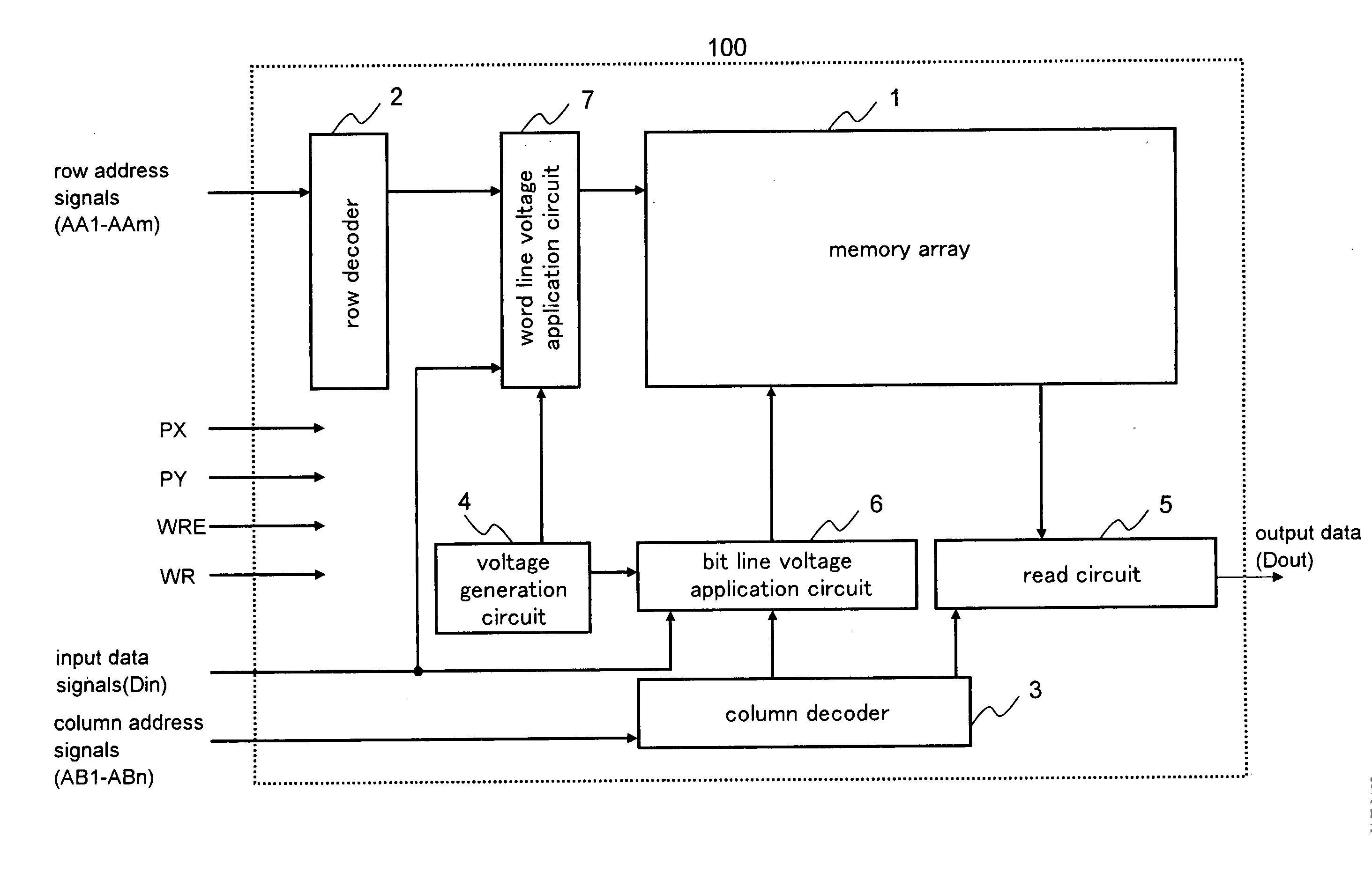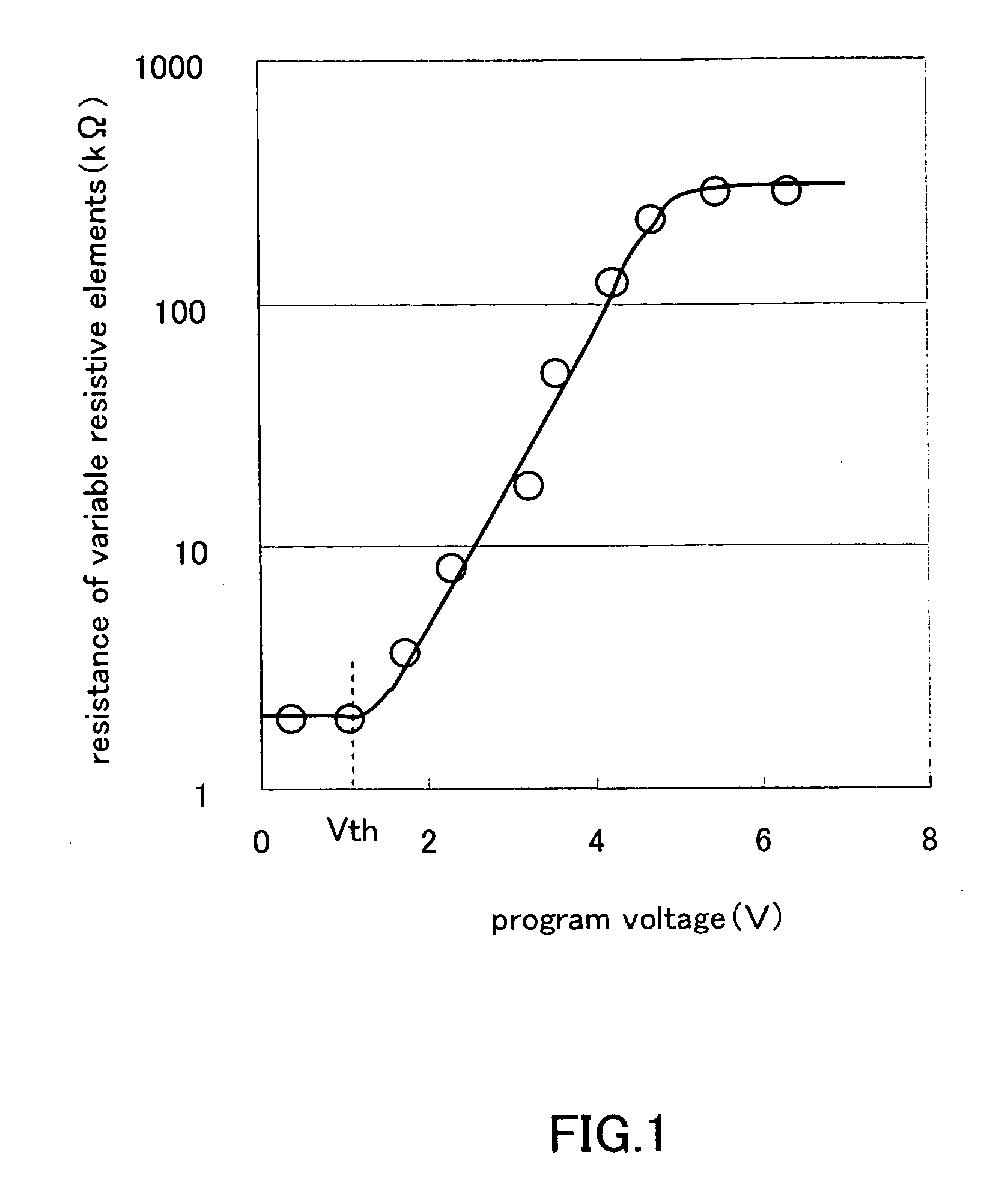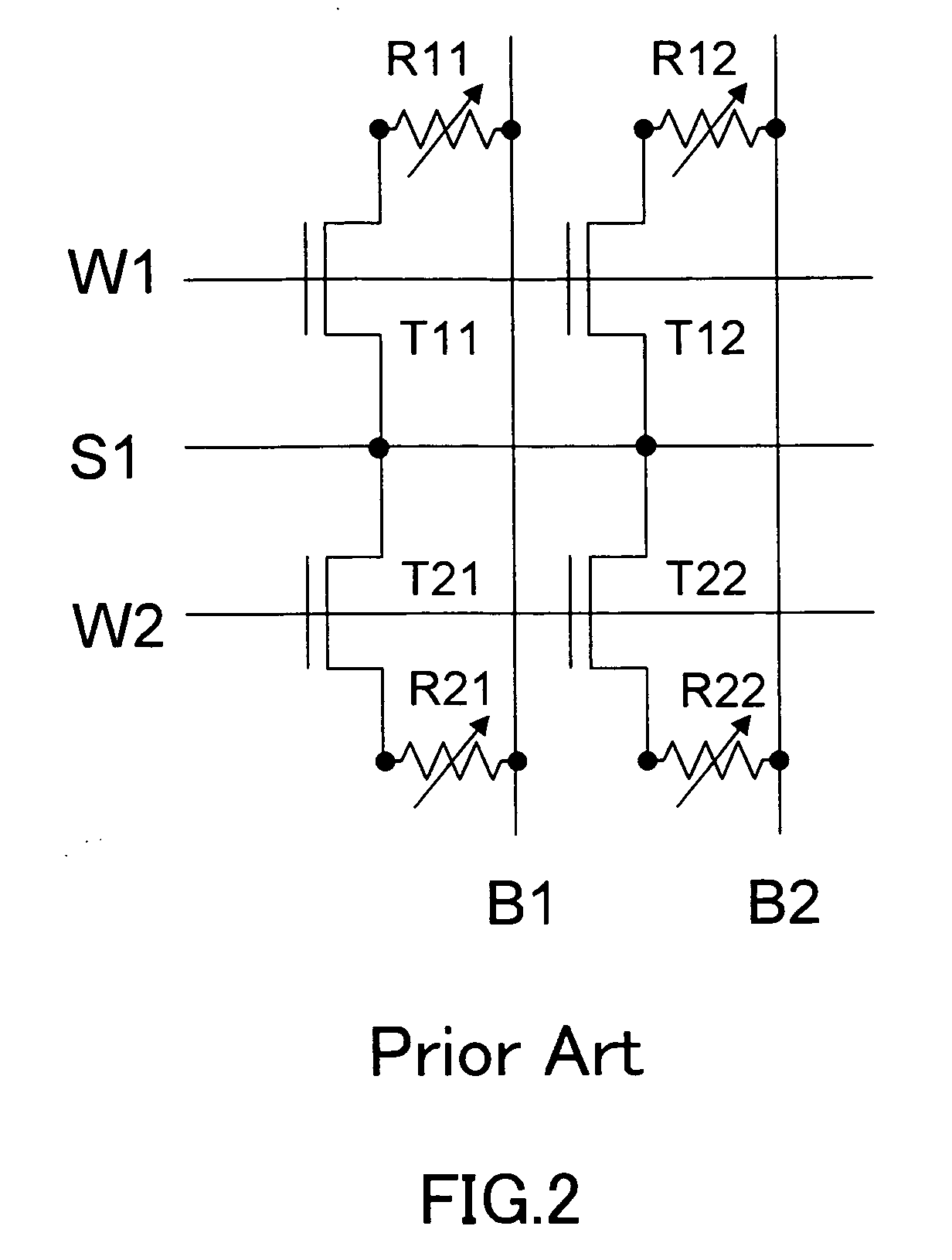Nonvolatile semiconductor memory device, and programming method and erasing method thereof
- Summary
- Abstract
- Description
- Claims
- Application Information
AI Technical Summary
Benefits of technology
Problems solved by technology
Method used
Image
Examples
first embodiment
[0037] FIG. 3 is a block configuration diagram showing a functional configuration according to the inventive device. As shown in FIG. 3, an inventive device 100 is formed of a memory array 1, a row decoder 2, a column decoder 3, a voltage generation circuit 4, a read circuit 5, a bit line voltage application circuit 6 and a word line voltage application circuit 7.
[0038] FIG. 4 is a diagram showing the configuration of the memory array 1 of FIG. 3. The memory array 1 is provided with d word lines 20, e bit lines 21 and d.times.e memory cells. Each memory cell has a variable resistive element 22 at a portion where a bit line and a word line cross. One end of the variable resistive element 22 of each memory cell in the same row is connected to the same word line, and the other end of the variable resistive element 22 of each memory cell in the same column is connected to the same bit line. As shown in FIG. 4, no memory cells have a cell selecting element and therefore, the area of the ...
second embodiment
[0069] In the first embodiment, the voltage is applied to all variable resistive elements 22 that form the memory array 1 so that a current flows through the entirety of the memory cells; therefore, consumed power increases when the memory array becomes large in scale. In addition, as described in the first embodiment, it becomes difficult for the read circuit to determine the program state and the erase state when the number of word lines increases. Therefore, the configuration, in which the memory array 1 is divided so that the divided memory arrays are driven, is shown in a second embodiment.
[0070] FIG. 16 is a block configuration diagram showing a function configuration according to the second embodiment of an inventive device 200. In the second embodiment, the memory array 1 in the first embodiment is divided into a plurality of sub-arrays 201 so that each sub-array 201 can be accessed. FIG. 16 shows an example of a case wherein a 64 k bit memory having 8 bits for the row addre...
PUM
 Login to View More
Login to View More Abstract
Description
Claims
Application Information
 Login to View More
Login to View More - R&D
- Intellectual Property
- Life Sciences
- Materials
- Tech Scout
- Unparalleled Data Quality
- Higher Quality Content
- 60% Fewer Hallucinations
Browse by: Latest US Patents, China's latest patents, Technical Efficacy Thesaurus, Application Domain, Technology Topic, Popular Technical Reports.
© 2025 PatSnap. All rights reserved.Legal|Privacy policy|Modern Slavery Act Transparency Statement|Sitemap|About US| Contact US: help@patsnap.com



